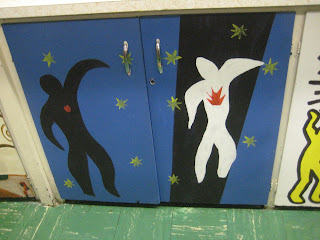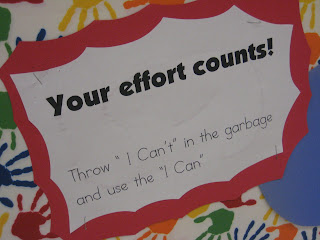PBIS (positive behavior interventions and support) was implemented in my home base school two years ago. At the time when it was introduced, we were having an extremely difficult time managing the students' behavior as a team. If students entered my art class, they felt their behavior had no effect on the rest of their days, even if I called home or gave a detention!
Here's a link to the PBIS website with more information:
http://www.pbis.org
As one of our first steps, we introduced "cool tools," which are simple phrases the students can remember throughout the day. We also held assemblies to go over the tools and help the students remember the phrases. Some of the phrases we use are:
Watch While Walking
Stash your Trash
Zip your Lip
Quick, Quiet, Clean
Leave your Attitude at the Door
Kindness is Contagious
Cool Tools for the Art Class
When I watched the assembly to introduce these tools, the speakers were listing off where these tools could be used...the lunchroom, bathroom, classroom...and I never heard art room. I stopped and said to myself, "Wait! We can use these anywhere in the school! Just because I didn't hear the assembly speaker list it off as an example doesn't mean I can't use them myself!!!" So, I started using them!
Watch While Walking: Students enter the art room and they may bump or trip over artwork! Or...when you push your cart into the room, the students need to watch and not bump into your materials!
Stash your Trash: I repeat this all the time to my students, especially when they leave paper towels in the sink! I remedied that by posting a friendly reminder in front of the sink.
Quick, Quiet, Clean: I give the last five minutes of class for students to clean up their materials. If the sink is needed for washing hands, the students say"Quick, Quiet, Clean" while washing their hands to limit their time. When I'm on the cart, they have to go one at a time to the bathroom to wash their hands. Sometimes, the students forget a word...they clean, but their loud. Or they're quiet and cleaning, but they're not quick. That's when I have to remind them of their points system (will be discussed below)!
Zip your Lip: If a student talks while I'm demonstrating a project, the other students say, "Zip your lip!" It's funny when kids tattle on each other.
Leave your Attitude at the Door: I admit one of my biggest pet peeves is when students bring outside drama into my room. I see them for 40 minutes. It's not that I don't care about them, but their worries and attitudes slow them down...especially when they're in 6th grade! If your students have legitimate problems, then you need to be there for them. But, if little Susie took Becky's apple at lunch, that can stay outside the door.
Kindness is Contagious: I love this one! When students hear "contagious" they think of colds and sneezing, so when I talk about this with kindergarten, I love to pretend to sneeze out "Thank you!" or "Please!" which makes them giggle! When a good deed is seen, make it known how awesome it is. The students feel more confident when they see their positive behavior being recognized.
Student Accountability
After our first year, we did notice an improvement, but we still were not quite there. A system was in place to reward positive behavior, but we still needed accountability for negative behaviors in school. Every teacher had their own systems in place, but when the students transitioned into a specials class, lunch, or recess, the students basically acted as if their actions didn't matter. In our second year, we introduced a "check" system. I discussed this in a previous post, but I wanted to re-visit it because this system was so effective, other schools in our district started using it.
The homeroom teachers were given a clipboard that was to be used in the classroom and taken to every specials class and in the lunchroom. Attached to the clipboard was the class roster, which was set up as a chart for the week. Teachers made multiple copies for the next few weeks. This way, a check was added to the board and the behavior mark was carried throughout the day. If a student misbehaved, they got a check. If a student didn't follow a cool tool, check. Fighting or physical contact was automatically an office visit, but name-calling went on the board.
One check: Warning
Two checks: Half of recess (walking or time out)
Three checks: All of recess
Four checks: Detention, note and/or phone call home
If a students received a check in the morning, many times they tried their best to not get another one by the end of the day!
If a student had three checks before art class and received a fourth with me, the teacher and I worked out who who write the detention and call home. It worked well, and I leave my happy face :)
Our school also had incentives for positive behavior. If a student lasted an entire quarter without a check, they were invited to special events at school, like pizza parties, pancake breakfasts, or special assemblies. At the end of the school year, the students who received no check marks all year were given trophies!
To answer the main question above, PBIS works very well for the art class, in classroom and on a cart. The system helps the entire staff work together to share the positive behavior and to make students accountable for their actions, positive or negative. If your school does not have PBIS is place and you're having management issues throughout the school, recommend this program to your administrators.



















































